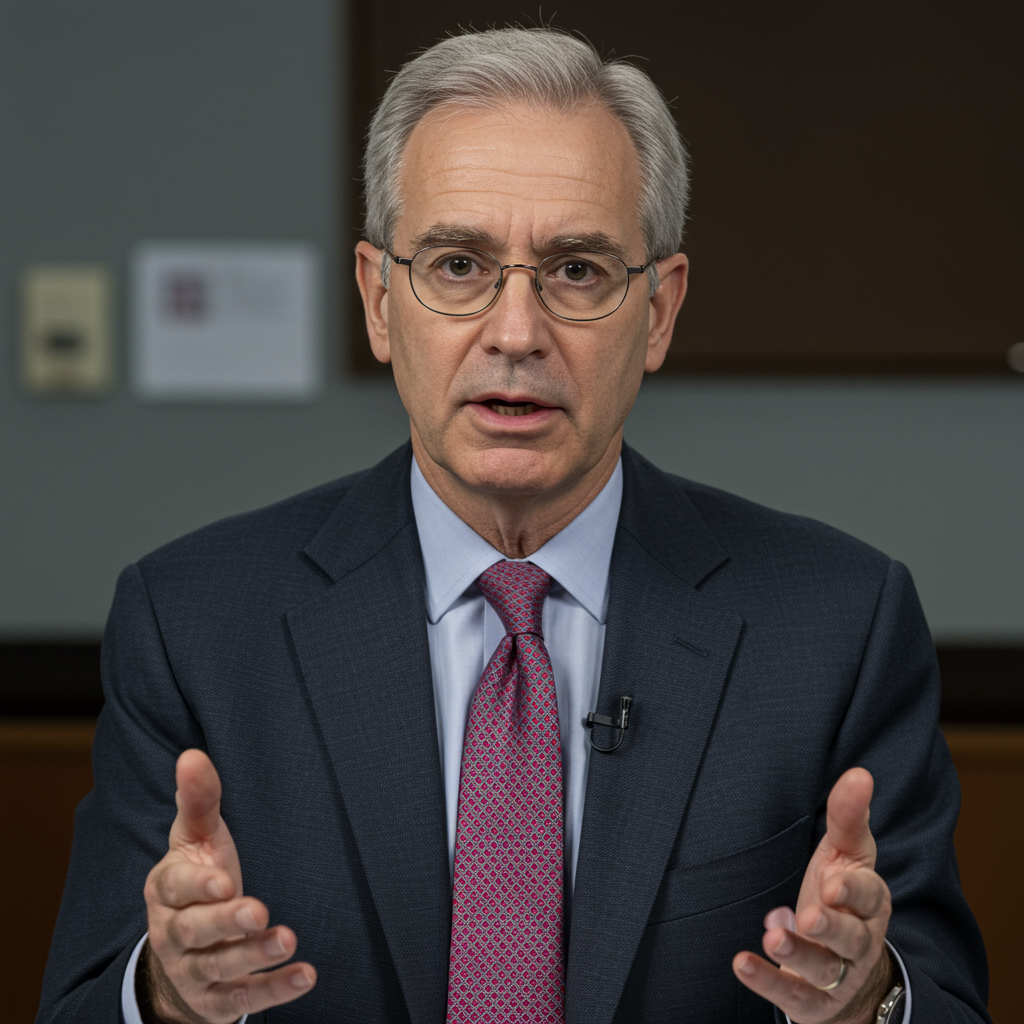A recent proposal suggesting the separation of combination childhood vaccines, particularly the Measles, Mumps, and Rubella (MMR) shot, has sparked immediate alarm among leading medical and public health experts. This controversial idea marks a significant departure from decades of established immunization practices in the United States, threatening to dismantle a cornerstone of preventative medicine. Experts universally condemn the suggestion as a dangerous resurgence of discredited strategies, emphasizing its potential to undermine public health and endanger children.
Why Experts Are Alarmed by the Call to Split MMR Vaccines
The recent suggestion by President Trump to administer single-component shots instead of the combined MMR vaccine has been met with profound shock and criticism from the scientific community. Dr. William Moss, executive director of the International Vaccine Access Center at Johns Hopkins Bloomberg School of Public Health, expressed his astonishment, noting that such a recommendation hasn’t been heard in decades. “Those vaccines don’t even exist in the U.S.,” he highlighted, underscoring the impracticality and scientific vacuum of the proposal. This move deviates sharply from the standard immunization practices that have protected generations of children.
A Familiar, Discredited Echo: The Wakefield Legacy
The contentious idea of splitting the MMR vaccine directly revives a long-debunked controversy from the late 1990s. Dr. Moss specifically referenced “the Andrew Wakefield days,” referring to the former doctor whose fraudulent 1998 study claimed a link between the MMR vaccine and autism. This study was later retracted due to severe ethical breaches and undisclosed financial conflicts of interest, including Wakefield’s patent for a single-measles vaccine and involvement in lawsuits against vaccine manufacturers. His medical license was ultimately revoked. Intriguingly, Wakefield himself recently claimed on social media that the president was “adopting the very recommendation that I made back in 1998.” Medical professionals like Dr. Moss strongly refute any validation of Wakefield’s past claims, stating, “This is a return to a discredited strategy. Wakefield had a financial stake in undermining MMR, and the science has never supported his claims.”
Understanding the Critical Role of Combination Vaccines
Combination vaccines like the MMR shot are foundational to modern public health strategies. They are not arbitrary combinations but carefully engineered solutions to deliver essential protection efficiently and effectively. Dr. Howard Markel, a pediatric infectious disease specialist and medical historian, explains that immunization schedules are meticulously developed. These schedules ensure vaccines offer “the most immunogenicity at the right age.” Splitting the MMR vaccine into individual components introduces significant barriers. Parents might not return for all necessary doses, or they may selectively choose, leading to declining coverage rates.
Dr. Peter Hotez, a pediatric infectious disease specialist at the Baylor College of Medicine, views the call to split vaccines as part of a larger, coordinated effort to discredit vaccinations altogether. He notes a pattern of recurring “zingers”—from thimerosal concerns to questions about spacing and aluminum—all designed to “topple the whole vaccine infrastructure like a house of cards.”
The Clear Medical and Logistical Dangers
Dismantling the established MMR schedule carries profound medical and programmatic risks. Measles remains one of the world’s most contagious viruses, capable of causing widespread outbreaks wherever vaccination rates fall. Rubella infection during pregnancy can lead to congenital rubella syndrome, causing severe birth defects like deafness, blindness, or heart problems in babies. Even mumps, often dismissed as mild, can result in serious complications, including infertility in adolescent males and hearing loss.
From a logistical standpoint, separating the MMR vaccine creates numerous challenges. Dr. Moss points out that parents already express concerns about the number of injections children receive. Splitting the MMR into three separate shots would drastically increase the number of appointments and injections, placing a greater burden on families. This also risks weakening protection against rubella and mumps, as not all follow-up appointments may be kept. Dr. Walt Orenstein, former head of the CDC’s immunization program, stresses that combination vaccines were developed precisely to “reduce missed opportunities, increase coverage and minimize the trauma of multiple injections.” Reversing this progress would jeopardize children’s health.
The Practical Impossibility of Single-Dose Vaccines in the U.S.
Beyond the scientific and public health arguments, the practicalities of obtaining single-component measles, mumps, or rubella vaccines in the U.S. present an insurmountable hurdle. Currently, standalone measles-only vaccines, for instance, are not available. A manufacturer interested in producing a monovalent measles vaccine would face immense challenges. This would include waiting for measles outbreaks to conduct new clinical trials, navigating rigorous FDA approval processes, and building an entirely new production and distribution system from scratch. Experts agree there’s no sustainable market for monovalent measles vaccines, given the entrenched and effective use of the combined MMR shot.
Recycled Misinformation and Historical Parallels
The debate around combination vaccines is not new; objections have deep historical roots. Elena Conis, a medical historian at UC Berkeley, highlights that resistance to vaccines, including concerns about their form and content, is “as old as vaccination itself.” She notes that similar debates occurred in the 1970s regarding the DPT (Diphtheria, Tetanus, and Pertussis) vaccine, with parents questioning the need for combined shots.
A persistent myth fueling calls to separate the rubella component is the false claim that the rubella vaccine “contains fetal parts.” In reality, the rubella virus was originally grown in human fetal cell lines developed in the 1960s. These cell lines have been replicated ever since, requiring no further abortions. During production, the virus is purified, leaving only trace, biologically inactive DNA or protein fragments. These levels are minuscule, far below natural background levels found in food or the human body, and are confirmed safe by regulators like the FDA. Advocates for splitting MMR often conflate this scientific history with misleading claims, proposing a “moral corrective” that would, in fact, introduce practical barriers and undermine protection for pregnant women and infants. Conis also observes that public perception of a disease’s severity significantly influences vaccine acceptance. Mumps, for example, was “often treated with humor rather than fear” until the MMR vaccine highlighted serious complications.
A Cautionary Tale: Japan’s Experience with Separated Vaccines
Japan offers a stark historical warning about the consequences of withdrawing combination vaccines. In the early 1990s, Japan paused its combined MMR vaccine program due to safety concerns specific to its mumps vaccine and reverted to using measles-only shots. The outcome was predictable: lower vaccination uptake for rubella and mumps compared to measles, creating significant gaps in protection across the population.
Decades later, Japan has grappled with repeated rubella outbreaks, including major epidemics in 2013 and 2018-2019 that sickened thousands and led to cases of congenital rubella syndrome. Compounding the problem, earlier policies had vaccinated only girls against rubella, leaving large cohorts of adult men under-immunized and vulnerable. This has necessitated costly catch-up vaccination campaigns. Dr. Paul Offit, a pediatrician and vaccine expert at Children’s Hospital of Philadelphia, warns that splitting the MMR vaccine in the U.S. would tragically repeat these past mistakes. He underscores, “We’ve been here before. Andrew Wakefield promoted single-antigen vaccines, and it nearly derailed measles control in the U.K. The science was fraudulent, but the damage was real: thousands of kids went unprotected. To revive that model in 2025 is to repeat one of the most damaging chapters in vaccine history.”
The Battle Between Politics and Public Health
The current proposal to split the MMR vaccine reflects a troubling trend of political interference overriding scientific consensus. Columbia University historian James Colgrove notes that anti-vaccination sentiments have deep roots, tracing back to 19th-century movements against state coercion. Elena Conis frames the ongoing debate as a tension between individual choice and public health, observing that a “libertarian approach” is now gaining support at the highest levels of government.
Dr. Demetre Daskalakis, a former head of the Centers for Disease Control and Prevention’s immunization program, views the proposal as driven by “ideology,” not safety. He highlights a pattern of directives issued “without data to back them up.” Dr. Debra Houry, former CDC chief science and medical officer, echoed this concern, stating that the discussion about separating MMR was “being driven by political operatives with no public health expertise.” Ultimately, as Dr. Moss concludes, splitting MMR is “not necessary, and monovalent vaccines aren’t even available in the United States. There’s no reason to go down that path.” The scientific community is united: combination vaccines are safe, effective, and crucial for community immunity.
Frequently Asked Questions
Why is splitting the MMR vaccine considered a bad idea by public health experts?
Splitting the MMR vaccine is widely condemned by public health experts because it reintroduces significant medical and logistical risks. Combination vaccines are designed for optimal effectiveness and convenience, ensuring high rates of immunization. Separating them into individual shots would likely lead to lower overall vaccination coverage, as parents may miss follow-up appointments or selectively choose which vaccines their child receives. This can result in outbreaks of highly contagious diseases like measles, rubella, and mumps, leading to severe health complications and increased healthcare burdens, as seen in Japan’s past experience.
Are single-component measles, mumps, or rubella vaccines available in the U.S.?
No, single-component measles, mumps, or rubella vaccines are currently not available in the United States for routine immunization. The standard of care has been the combined MMR vaccine for decades. To make individual vaccines available, manufacturers would need to undertake costly and time-consuming processes, including new clinical trials, FDA approval, and establishing entirely new production and distribution systems. Experts agree there is no sustainable market or compelling scientific reason for such a shift, especially given the proven efficacy and safety of the existing MMR vaccine.
How does the proposed splitting of the MMR vaccine impact a child’s immunization schedule and overall protection?
The proposed splitting of the MMR vaccine would significantly complicate a child’s immunization schedule. Instead of a single shot protecting against three diseases, a child would require multiple separate injections and additional clinic visits. This increased burden on parents and healthcare systems often results in missed appointments and incomplete vaccination series, particularly for families with limited resources. Consequently, children would be left vulnerable to diseases like measles, mumps, and rubella for longer periods, weakening the community’s herd immunity and increasing the risk of widespread outbreaks.
Safeguarding Public Health: The Consensus Remains Clear
The scientific consensus is unequivocal: combination vaccines, including the MMR shot, are a safe, effective, and indispensable tool for protecting children and communities from preventable diseases. Research consistently demonstrates that combination vaccines improve vaccination uptake and timeliness by simplifying immunization schedules and reducing the number of injections. The proposal to split the MMR vaccine is not grounded in science but reflects a political ideology that risks undermining decades of public health progress. As experts warn, allowing misinformation to erode public confidence in established immunization practices could have devastating and long-lasting consequences, jeopardizing the health and well-being of future generations.
Word Count Check: 1205 words



